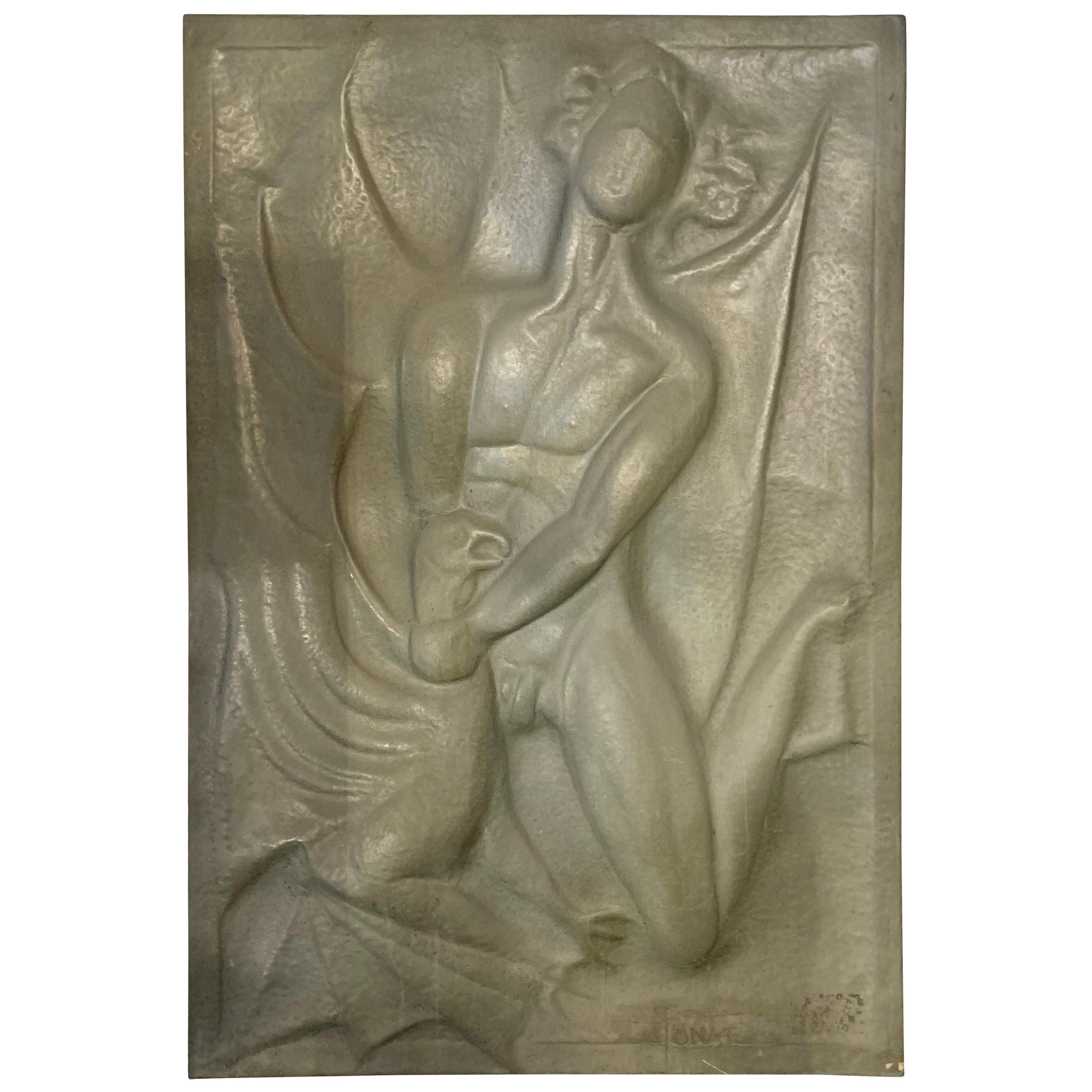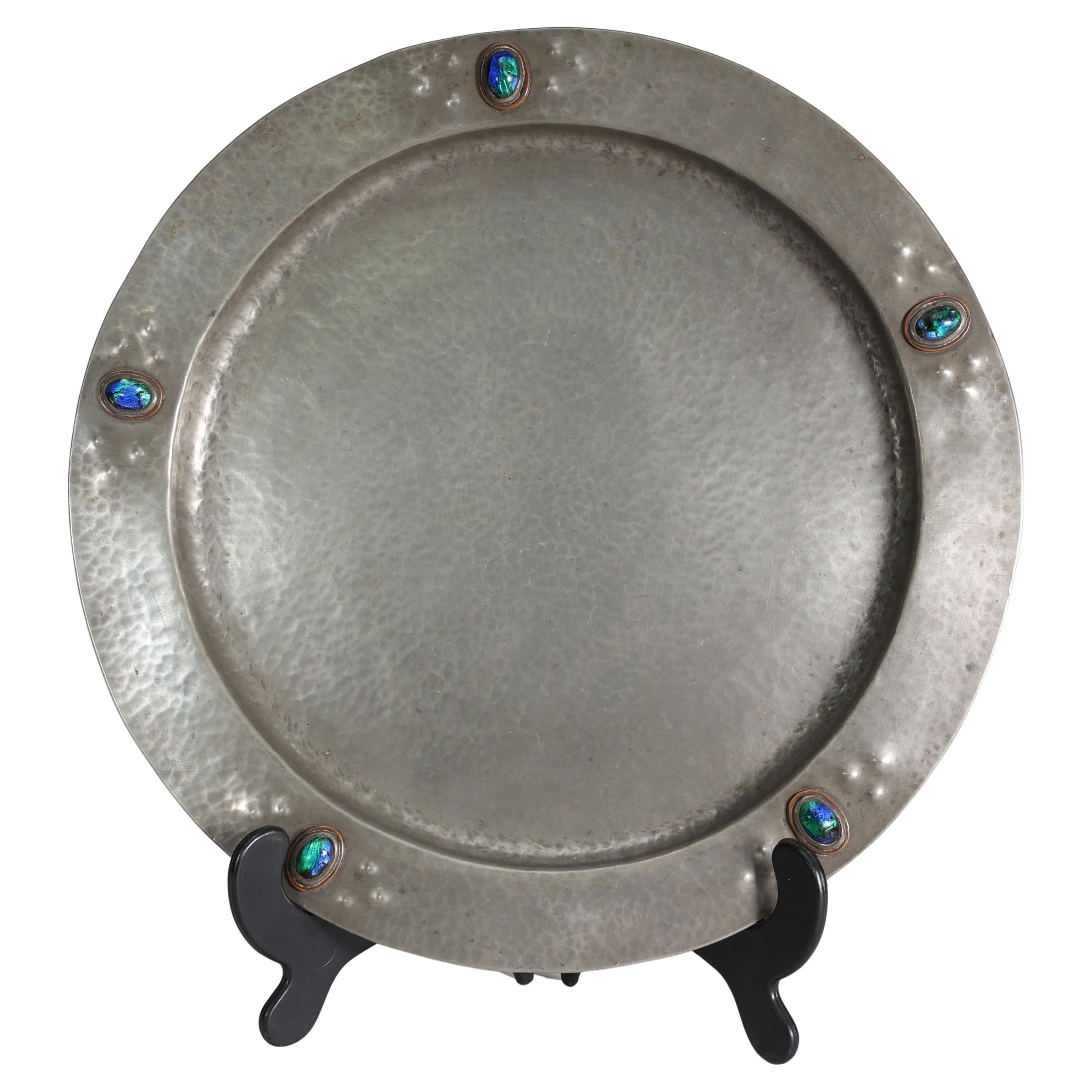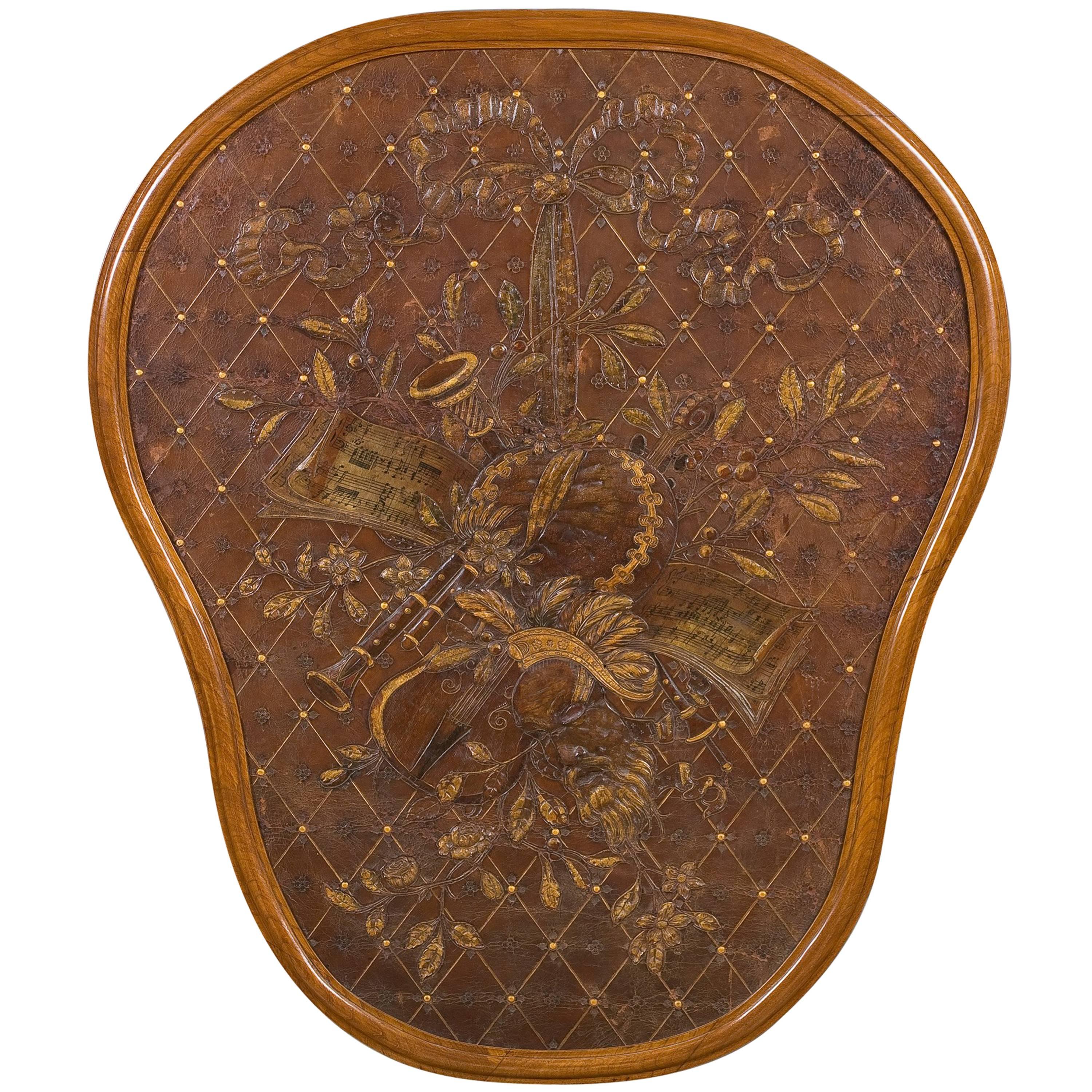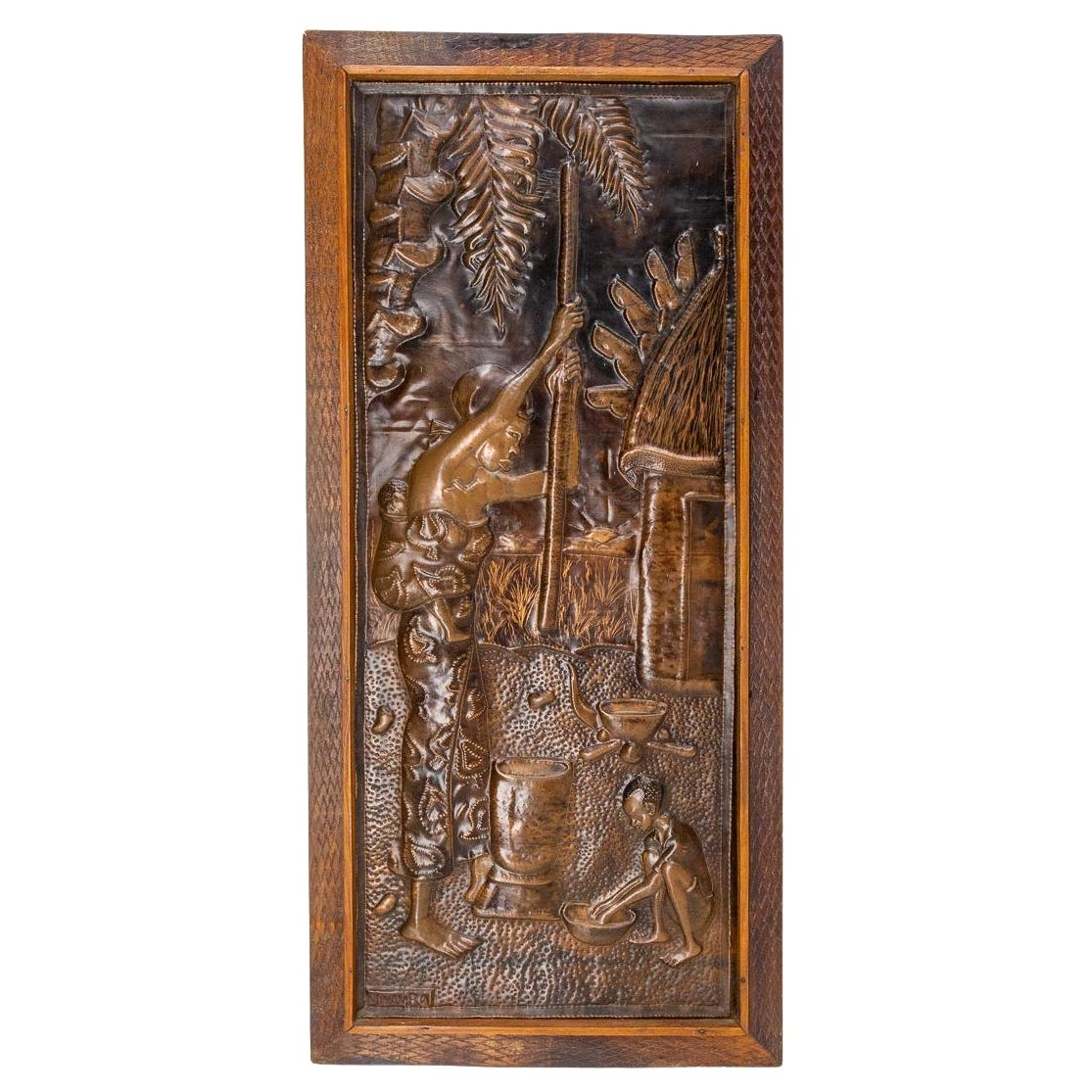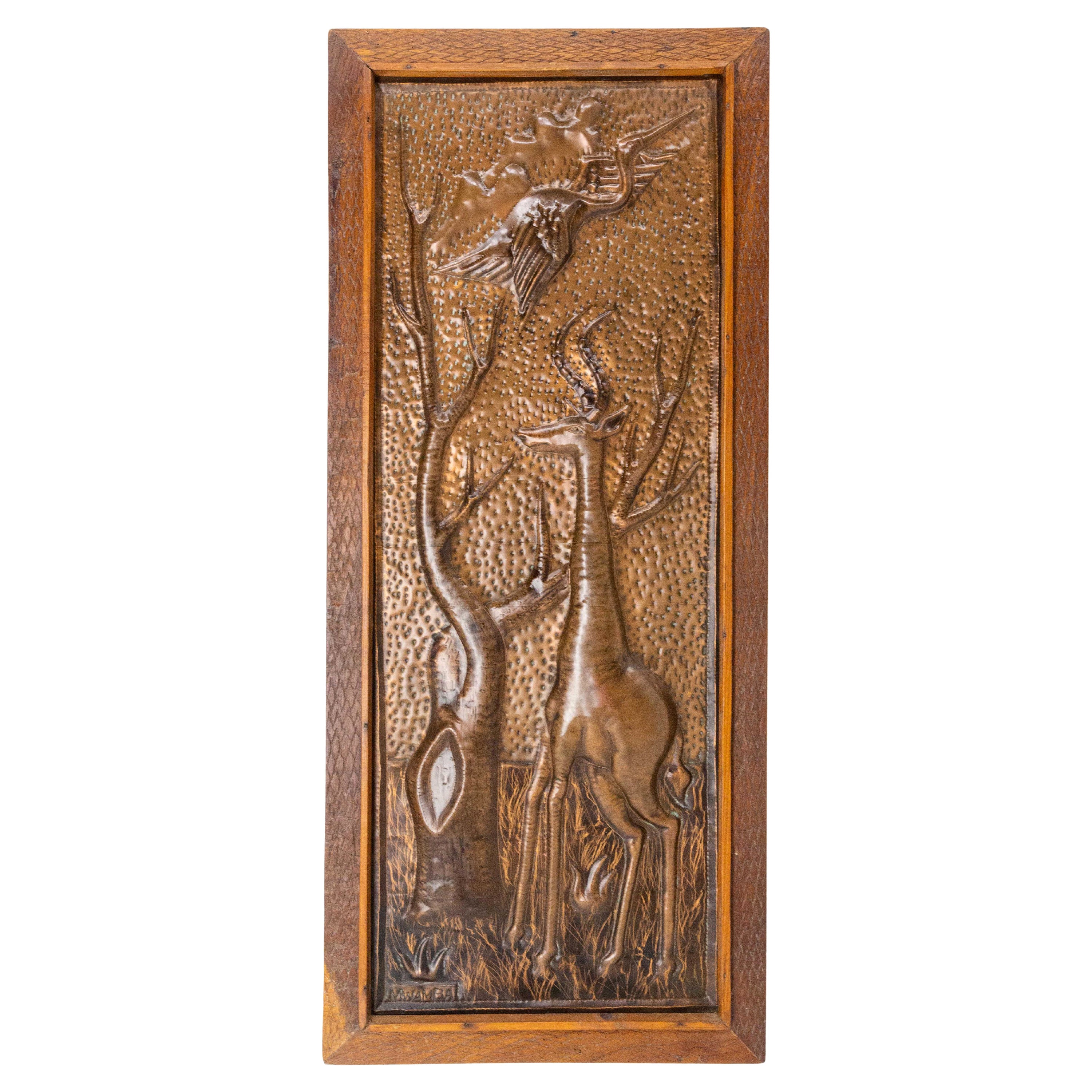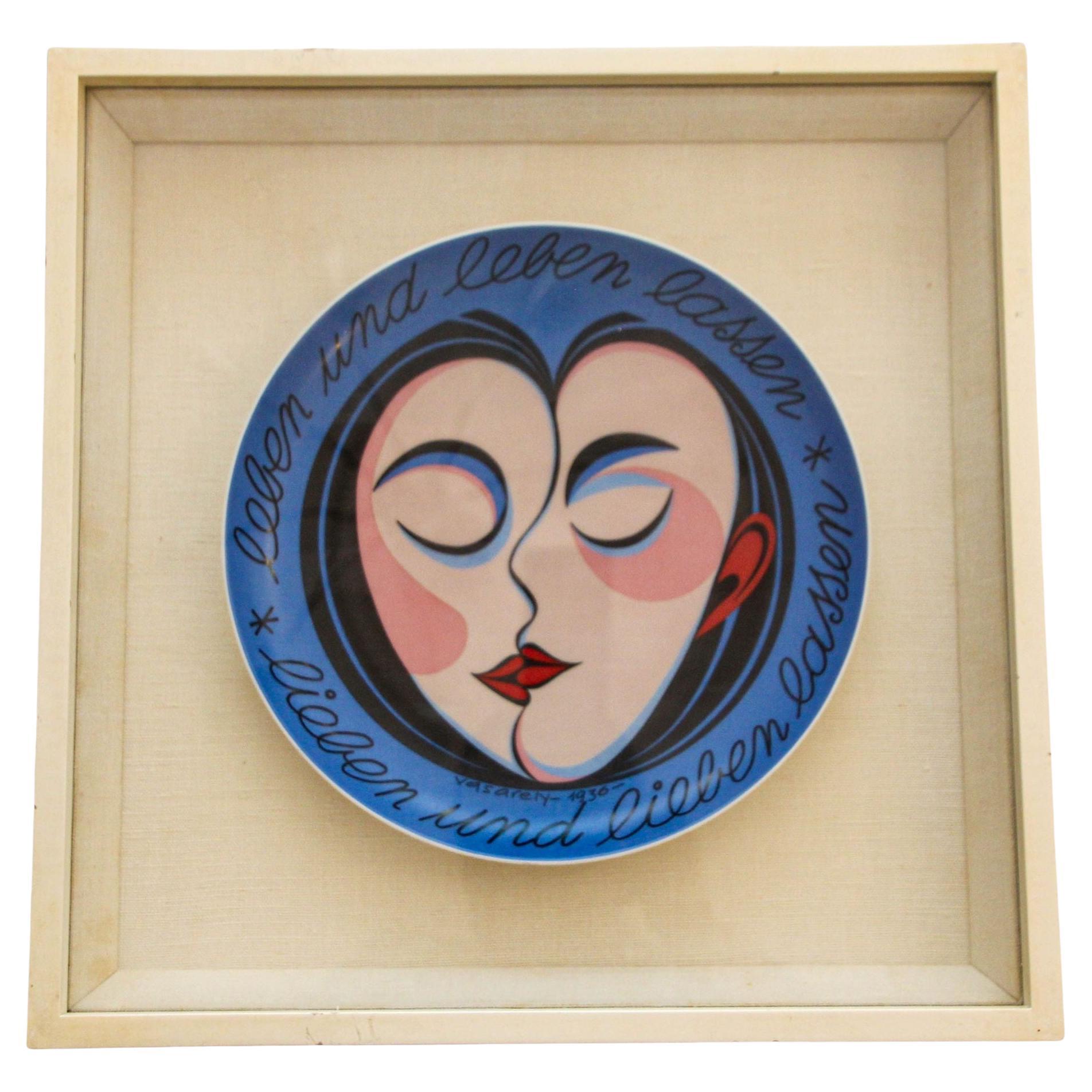Items Similar to E. G. Cody Framed and Embossed Pewter Plate Panel
Want more images or videos?
Request additional images or videos from the seller
1 of 21
E. G. Cody Framed and Embossed Pewter Plate Panel
About the Item
Embossed pewter plated paper panel elegantly mounted and framed in a silver gilt wood frame.
Label on verso "E. G. Cody Pewter Plate Series"
One owner. Extremely clean.
- Dimensions:Height: 55 in (139.7 cm)Width: 27 in (68.58 cm)Depth: 1.5 in (3.81 cm)
- Style:Post-Modern (Of the Period)
- Materials and Techniques:
- Place of Origin:
- Period:1980-1989
- Date of Manufacture:1984
- Condition:9.5 out of 10. Ready to place.
- Seller Location:Hanover, MA
- Reference Number:1stDibs: LU886628343302
About the Seller
4.9
Vetted Seller
These experienced sellers undergo a comprehensive evaluation by our team of in-house experts.
Established in 2008
1stDibs seller since 2010
959 sales on 1stDibs
Typical response time: <1 hour
- ShippingRetrieving quote...Ships From: Hanover, MA
- Return PolicyThis item cannot be returned.
More From This SellerView All
- "Transmutation" by Bernhard Rohne, Acid Etched Brass Panel in Frame 18/100By Bernhard RohneLocated in Hanover, MAFramed acid etched brass panel by Bernhard Rohne. 32 inches wide by 24 inches high. Signed and dated lower left "Bernhard Rohne 18/100 1. Feb. '78" The title of this work is "Transmutation" and comes from a series of "space" related designs begun for the 1975 gallery opening...Category
Vintage 1970s Canadian Mid-Century Modern Wall-mounted Sculptures
MaterialsBrass
- Max Bill Geneve Musee Serigraph, 1972By Max BillLocated in Hanover, MAMax Bill (1908-1994) Geneva Museum exhibition serigraph, created to accompany the exhibition of works by Max Bill held from 6 April through 30 April 1972 at the Musee Rath in Geneva,...Category
Vintage 1970s French Mid-Century Modern Posters
MaterialsAluminum
- Art Deco Cobalt Blue Wall MirrorLocated in Hanover, MA1930s American star pointed midnight blue glass mirror with round beveled glass silver mirror applied on center with four chromed cap fittings, clipped to thin wood back. Most likely...Category
Vintage 1930s American Art Deco Wall Mirrors
- Metal Wall Plaques of Stylized Wine Bottles By SextonBy SextonLocated in Hanover, MA1950's wall plaques made of colorfully enameled cast metal in form of stylized wine bottles. Various configurations possible as some are singles while others are doubles and triples...Category
Vintage 1950s American Mid-Century Modern Wall-mounted Sculptures
MaterialsMetal
- Italian Panel Frame Rectangular Mirror Attributed to Crystal ArtBy Ultima Crystal ArtLocated in Hanover, MAA Minimalist variation of the Classic Venetian scalloped and etched mirrors from the period, without all the fuss. The large midcentury Italian rectangular mirror is extended to the ...Category
Vintage 1960s Italian Mid-Century Modern Wall Mirrors
MaterialsBrass
- Three Framed Plates from "L'ornement Polychrome" Edited by RacinetBy Auguste RacinetLocated in Hanover, MAThree mounted and giltwood framed chromolithograph plates from L'Ornement Polychrome: Motifs de tous les styles, art ancien et asiatique, Moyen Age, Renaissance, XVIIe et XVIIIe siècles, by A. Racinet, 1869-1873. Published by Firmin-Didot, Paris. Specifically, the three framed plates are Middle Ages, Renaissance and 17th century. This reference work “created to render major services to our industrial arts” brings the archeological art...Category
Antique 19th Century French Victorian Prints
MaterialsGiltwood
You May Also Like
- Art Deco Embossed Pewter Panel Sculpture, 1920sLocated in Florence, ITArt Deco metal embossed pewter panel sculpture representing a naked boy with eagle, signed by Foma.Category
Early 20th Century Italian Art Deco Decorative Art
MaterialsPewter
- Liberty and Co An Arts & Crafts hand hammered pewter plateBy Liberty & Co.Located in London, GBLiberty & Co attributed. An Arts & Crafts hand hammered pewter plate with five blue enamel jewels running around the edge.Category
Antique Early 1900s English Arts and Crafts Decorative Art
MaterialsPewter
- French Embossed Leather Panel, 19th CenturyLocated in Saint-Ouen, FRFrench embossed Leather Panel "Allegory of Music and Theater" 19th century.Category
Antique 19th Century French Decorative Art
MaterialsLeather
- Representation of an African Woman Embossed Copper and Iroko FrameLocated in Labrit, LandesAfrican carved woman representation. Embossed copper and frame in carved iroko. Signed Mwamba. Shipping: L 40 P 2,5 H 86.Category
Vintage 1940s African Mid-Century Modern Decorative Art
MaterialsCopper
- Representation of an African Giraffe Embossed Copper and Iroko FrameLocated in Labrit, LandesAfrican carved giraffe representation Embossed copper and frame in carved iroko Signed Mwamba Shipping: L 40 P2,5 H86.Category
Vintage 1940s African Mid-Century Modern Decorative Art
MaterialsCopper
- 1970s VASARELY "Live and let live love and let love" Rosenthal Framed PlateBy Rosenthal, Victor VasarelyLocated in North Hollywood, CA1970s VICTOR VASARELY "Live and let live love and let love". Rosenthal collectible framed German plate. Victor Vasarely Rosenthal Studio Line Limited Edition Porcelain Plate. By Vasarely born 1936. "Leben und Leben lassen, Lieben und Lieben lassen" "Live and let live - love and let love". Limited edition, signed and numbered. Plate is in good condition, size is 12". Frame is not in good condition, white became yellowish shows wear. Victor Vasarely, born as Győző Vásárhelyi on April 9, 1906, in Pécs, Hungary, was a Hungarian-French artist widely regarded as the "father of Op Art" (Optical Art). He is known for his pioneering work in geometric abstraction and the use of optical illusions to create visually captivating and dynamic artworks. Vasarely's early career involved studying medicine in Budapest, but he later decided to pursue his passion for art and enrolled in the Műhely (Workshop) academy in Hungary. He initially experimented with various styles, including Impressionism and Post-Impressionism, but his interest in geometric abstraction grew stronger over time. In the 1930s, Vasarely moved to Paris, where he continued to explore geometric patterns, lines, and shapes in his art. He believed that art should not merely imitate nature but should create its own language of forms and colors to engage the viewer's perception actively. This philosophy led to the development of Op Art, a movement that emerged in the 1960s and focused on creating optical illusions and visual effects through precise geometric patterns and colors. Vasarely's artworks often featured meticulously arranged geometric shapes, giving the impression of movement and three-dimensionality. He employed various optical tricks, such as the juxtaposition of contrasting colors and the use of repetition, to create an illusion of depth and visual dynamism. His artworks can evoke a sense of visual vibration and often challenge the viewer's perception. Throughout his career, Vasarely's influence extended beyond the art world. He believed in the democratization of art and wanted to make art accessible to a wider audience. He embraced mass production techniques, creating what he called "multiple originals" or "serigraphs" (a form of screen printing). These serigraphs allowed him to produce multiple copies of his artworks at affordable prices, making them more accessible to art enthusiasts. Vasarely's artistic legacy continues to be celebrated around the world. His work has been exhibited in numerous galleries and museums, and he remains an influential figure in the fields of Op Art and abstract geometric art. He passed away on March 15, 1997, in Paris, leaving behind a vast body of work that continues to captivate audiences and inspire artists to this day. About Rosenthal: German porcelain manufactory Rosenthal was originally founded as a ceramics-painting studio by Philipp Rosenthal Sr. (1855-1937) in 1879 at Schloss Erkersreuth in Bavaria, near the Czech border. Its first highly popular product was an ashtray inscribed with the words “Resting place for lit cigars.” In 1890, the company moved to the neighboring hamlet of Selb and, a year later, began to manufacture its own porcelain, since white porcelain was, at that time, in short supply. Rosenthal’s first complete table service was called Empire; it was exhibited along with other lines at Paris’s Exposition Universelle in 1900. With the dawn of the 20th century, Rosenthal began producing porcelain tableware and services formed and decorated in the latest styles, like the Jugendstil Botticelli (1903), the Art Nouveau Darmstadt (1905), and the all-white Maria (1916) lines. Successes with this au courant approach led the company to launch an art pottery division in 1910, dedicated to luxury tableware, vases, and other decorative objects. By the 1930s, figurines were another important Rosenthal product, most notably the Disney-licensed Mickey Mouse pieces introduced in 1931. In 1934, Philipp Rosenthal was forced to leave his company and country when his Jewish ancestry came under persecution by the Nazi regime. Despite the loss of its founder, the Rosenthal company remained the premier supplier of high-quality porcelain tableware to the Third Reich. After the war, in 1950, Philip Rosenthal Jr. (1916-2001) joined his father's company as an advertising manager. By 1958, he had become its CEO, continuing his father’s vision to produce high-quality porcelain in line with progressive tastes. Through the rest of the 20th century, Rosenthal was the most commercially successful porcelain producer in Germany. In the postwar era, Rosenthal’s most famous tableware lines have included 2000 by Raymond Loewy and Richard Latham (1954), Magic Flute by Bjørn Wiinblad (1959), Suomi by Timo Sarpaneva (1976), and Moon by Jasper Morrison (1997). The company has enjoyed many popular and critically acclaimed collaborations with designers and brands, like Salvador Dalì, Tapio Wirkkala, Walter Gropius, Andy Warhol, Ron Arad, Enzo Mari, Konstantin Grcic, and Versace. Rosenthal's product lines have encompassed more than ceramics over the years. In 1972, the company began producing furniture, under the subsidiary Rosenthal Einrichtung, in Espelkamp, Germany. Standouts from this arm of Rosenthal include Gunter Ferdinand Ris and Herbert Selldorf’s futuristic Sunball Lounge Chair (1969), Verner Panton’s Relaxer Rocking Chair (1974), Burchard Vogtherr's Vario Pillo...Category
Late 20th Century German Post-Modern Decorative Art
MaterialsPorcelain
Recently Viewed
View AllMore Ways To Browse
Pewter Frames
Embossed Decorative Plate
Pewter Wall Plate
Post Modern Pewter
E G Cody
4 Chinese Wall Panels
Delange 1869
Chinese Wall Panels 4
Vintage Fish Plaques
Framed Pressed Botanicals
Antique Herbarium
Old Antique Bird Cages
Copeland Greg
Chinoiserie Plaque
Antique Stone Wall Plaques
Wedgwood Frame
Florentine Plaque
Raindrop Wall Art
